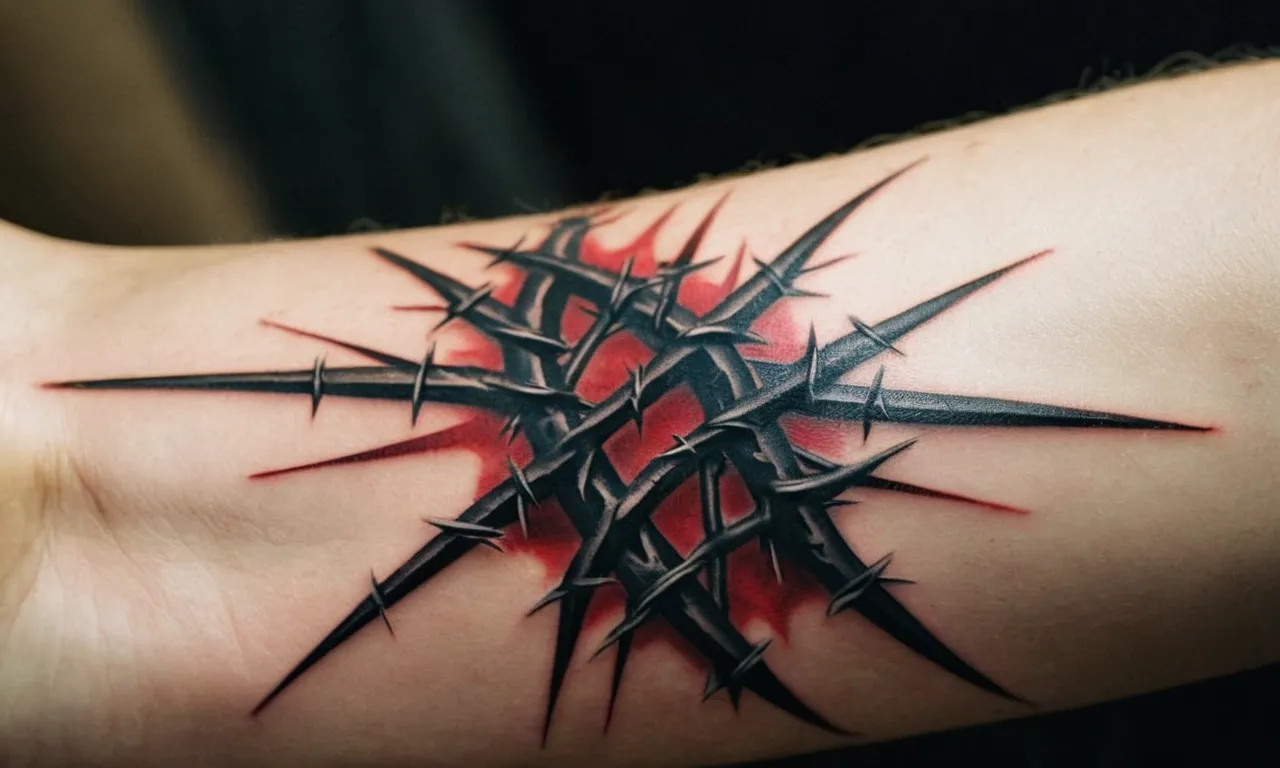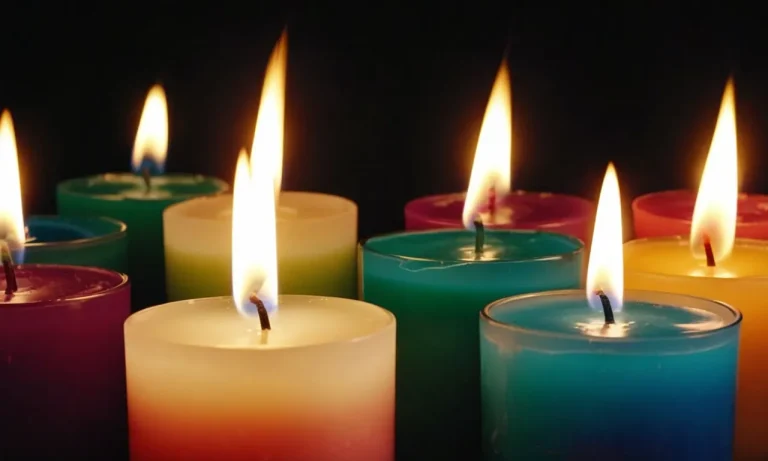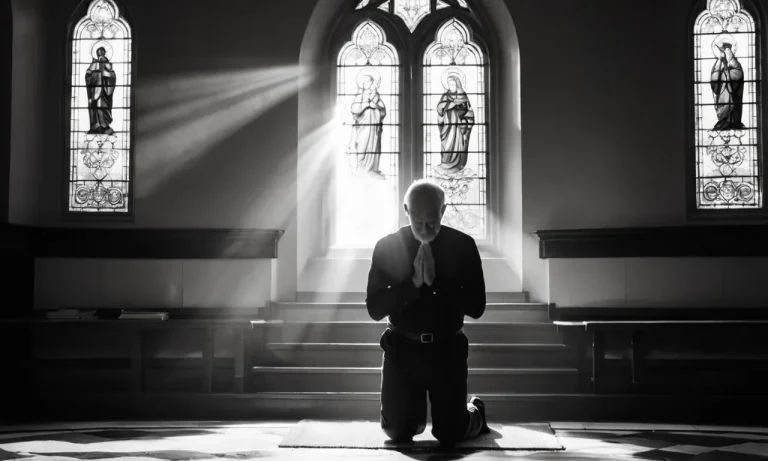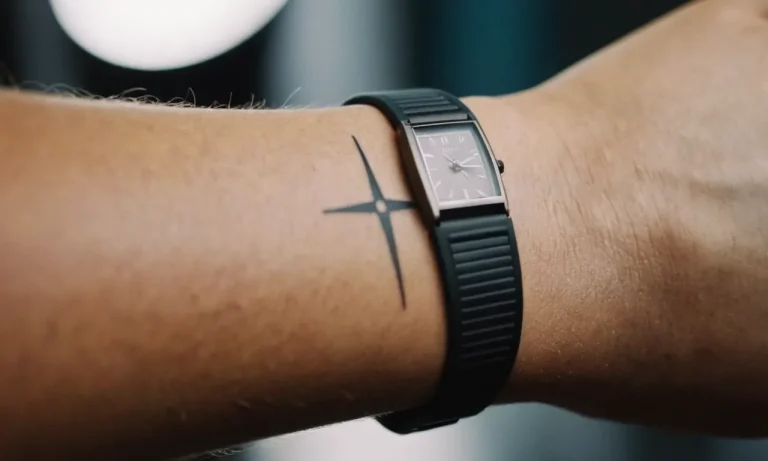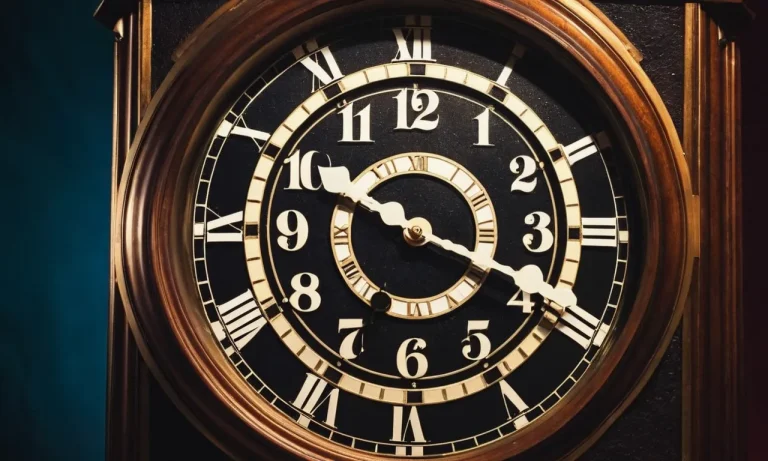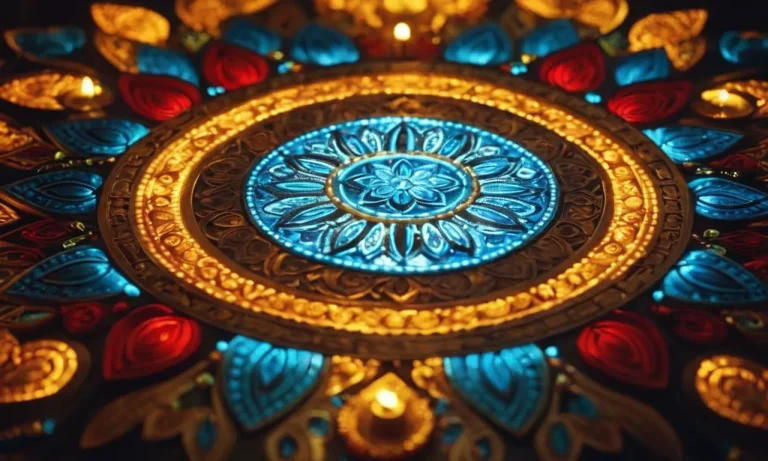Crown Of Thorns Tattoo Meaning: Exploring The Symbolism And Significance
In the realm of tattoo art, few designs carry as much symbolic weight as the crown of thorns. This intricate and evocative motif has captivated individuals across cultures and belief systems, serving as a powerful representation of sacrifice, suffering, and redemption.
If you’re short on time, here’s a quick answer to your question: The crown of thorns tattoo is a deeply symbolic design that draws its inspiration from the biblical account of Jesus Christ’s crucifixion.
It represents the suffering endured by Christ during his passion and serves as a reminder of the sacrifices made for the sake of others. Beyond its religious connotations, the crown of thorns can also symbolize resilience, strength, and the ability to overcome adversity.
In this comprehensive article, we will delve into the rich history and multifaceted meanings associated with the crown of thorns tattoo. From its biblical origins to its contemporary interpretations, we will explore the various perspectives and personal narratives that have shaped this powerful design.
The Biblical Roots of the Crown of Thorns
The crown of thorns, a poignant symbol deeply rooted in Christian tradition, holds profound significance in the story of Jesus Christ’s passion and sacrifice. This iconic emblem draws its origins from the biblical accounts of the Gospels, where it played a pivotal role in the events leading up to the crucifixion.
The Passion of Christ
According to the Gospels, after Jesus was condemned to death by Pontius Pilate, the Roman soldiers mocked and tortured Him. They wove a crown from thorny branches and forcefully placed it upon His head, inflicting excruciating pain and drawing blood (Matthew 27:29, Mark 15:17, John 19:2). This cruel act symbolized the mockery and humiliation endured by Christ, even as He embraced His fate as the Savior of humanity.
Symbolism of Suffering and Sacrifice
The crown of thorns has become an enduring symbol of the immense suffering and sacrifice that Christ willingly endured for the salvation of mankind. It represents the physical agony He experienced, as well as the emotional anguish and spiritual torment He faced during His passion. Beyond its literal interpretation, the crown of thorns also serves as a metaphor for the burdens and afflictions that believers may encounter in their journey of faith, mirroring Christ’s own trials and tribulations.
According to a study by the Pew Research Center, around 29% of adults in the United States identify as religiously unaffiliated, highlighting the enduring relevance of religious symbolism and its impact on society.
Redemption and Resurrection
Despite the agony and humiliation represented by the crown of thorns, it ultimately serves as a powerful symbol of redemption and resurrection. Through His suffering and death on the cross, Christ conquered sin and death, paving the way for the forgiveness of sins and the promise of eternal life for those who believe in Him. The crown of thorns, once a symbol of mockery and pain, has been transformed into a testament of Christ’s unwavering love and the ultimate triumph of His sacrifice.
Many Christian websites and resources, such as BibleStudyTools.com, offer in-depth explorations of the crown of thorns’ symbolism and its significance in the Christian faith. These resources can be invaluable for those seeking a deeper understanding of this powerful emblem and its role in the story of Christ’s passion and resurrection.
Cultural and Religious Significance
Christianity and the Crown of Thorns
The crown of thorns holds immense significance in Christianity, symbolizing the suffering and sacrifice of Jesus Christ. According to the Bible, a woven crown of thorns was placed on Jesus’ head by Roman soldiers before his crucifixion, mocking his claim to be the King of the Jews.
This act of cruelty has become a powerful symbol of Christ’s humiliation, pain, and ultimate sacrifice for the redemption of humanity. John 19:1-5 vividly describes this event, cementing its place in Christian theology and iconography.
The crown of thorns tattoo is a popular choice among Christians as a way to express their faith and honor Christ’s sacrifice. It serves as a reminder of the depth of God’s love and the price paid for humanity’s salvation.
According to a survey by Pew Research Center, nearly 30% of Christian millennials in the United States have at least one tattoo, with many choosing religious symbols like the crown of thorns. This trend highlights the enduring significance of this symbol in contemporary Christian culture.
Other Religious Interpretations
While the crown of thorns holds particular significance in Christianity, it has also been interpreted in other religious contexts. In some branches of Hinduism, for instance, the crown of thorns is associated with the god Shiva, symbolizing his asceticism and detachment from worldly pleasures.
In Buddhism, the thorns can represent the obstacles and suffering that must be overcome on the path to enlightenment. These diverse interpretations underscore the universal appeal of the crown of thorns as a symbol of sacrifice, endurance, and spiritual growth.
Cross-Cultural Symbolism
Beyond its religious connotations, the crown of thorns has also taken on broader symbolic meanings across cultures. It can represent the burdens and hardships of life, the sacrifices made for a greater cause, or the resilience of the human spirit in the face of adversity.
In some contexts, the crown of thorns is seen as a symbol of humility, reminding us to remain grounded and compassionate despite our achievements or status.
The versatility of the crown of thorns as a symbol is reflected in its widespread use in art, literature, and popular culture. From Renaissance paintings to modern tattoo designs, the crown of thorns continues to captivate and inspire artists and individuals alike, transcending its religious origins to become a universal emblem of human experience. As a tattoo, it can represent a personal journey, a struggle overcome, or a commitment to a higher purpose – a powerful and deeply personal statement etched onto one’s skin.
Personal Narratives and Meanings
Overcoming Adversity and Resilience
For many individuals, the crown of thorns tattoo symbolizes their journey through hardship, pain, and adversity. It serves as a powerful reminder of their resilience and determination to persevere despite the challenges life throws their way.
The thorns represent the obstacles they’ve faced, while the crown signifies their triumph over those difficulties. This tattoo can be a source of strength, reminding them that they have the courage and fortitude to overcome any obstacle that comes their way.
According to a tattoo symbolism website, the crown of thorns tattoo is often chosen by individuals who have battled addiction, illness, or personal struggles, and emerged victorious on the other side.
Remembrance and Honoring Sacrifices
The crown of thorns is a deeply symbolic image in Christianity, representing the suffering and sacrifice of Jesus Christ. As such, many individuals choose to get this tattoo as a way to honor and remember the sacrifices made by loved ones or to pay tribute to their faith.
It can be a powerful way to memorialize a loved one who has passed away or to commemorate a significant life event or personal sacrifice. According to TattooSeeker, a renowned tattoo resource site, the crown of thorns tattoo is particularly popular among military personnel and first responders, who often use it to honor the sacrifices made by their fallen comrades or to symbolize their own willingness to put their lives on the line in service to others.
Spiritual Journeys and Transformations
For many individuals, the crown of thorns tattoo represents a profound spiritual journey or transformation. It can symbolize the pain and suffering that often precedes personal growth, enlightenment, or a deeper connection with one’s faith.
The thorns may represent the challenges, doubts, or struggles that one must overcome on the path to spiritual awakening, while the crown signifies the wisdom, peace, and understanding that comes from that journey.
According to a tattoo blog, the crown of thorns tattoo is particularly popular among those who have undergone a significant spiritual transformation, such as a conversion to a new faith or a deepening of their existing beliefs.
It can serve as a constant reminder of their spiritual journey and the lessons they’ve learned along the way.
Regardless of the specific meaning or narrative behind it, the crown of thorns tattoo is a powerful and enduring symbol that resonates with many individuals on a deeply personal level. Whether it represents overcoming adversity, honoring sacrifices, or spiritual growth, this tattoo serves as a reminder of the strength, resilience, and determination that lies within each of us.
With its rich symbolism and personal significance, the crown of thorns tattoo is a testament to the human spirit and our ability to find meaning and beauty even in the midst of pain and suffering.
Tattoo Design and Placement
The crown of thorns tattoo can be designed in various styles, ranging from traditional to modern interpretations. Traditional designs often depict the crown in a more realistic and intricate manner, with thorny vines intricately woven together. These designs may incorporate religious symbols or imagery, such as crosses or biblical scenes, adding depth and meaning to the tattoo.
On the other hand, modern styles tend to be more minimalistic or abstract, using bold lines and geometric shapes to represent the crown. The choice of style often reflects the wearer’s personal preferences and the desired level of detail.
Traditional and Modern Styles
- Traditional designs: Realistic, intricate, incorporating religious symbols and imagery
- Modern styles: Minimalistic, abstract, bold lines, and geometric shapes
The placement of the crown of thorns tattoo can also hold symbolic significance. Many choose to have it inked on their arms, shoulders, or back, as these areas are highly visible and can serve as a powerful statement. According to a survey by TattooSam, approximately 32% of individuals with crown of thorns tattoos opt for placement on their arms or shoulders.
Others may choose more discreet locations, such as the chest or ribs, where the tattoo holds personal meaning while remaining concealed from public view.
Symbolism of Placement
- Arms, shoulders, or back: Highly visible, powerful statement (32% of wearers according to TattooSam)
- Chest or ribs: Discreet, personal meaning
Many individuals choose to incorporate additional elements into their crown of thorns tattoo design, further enhancing its symbolism and personal significance. Popular additions include roses, representing love and sacrifice, or crosses, symbolizing faith and redemption. Some may also include quotes or scripture verses that hold deep meaning for them.
By combining these elements, the tattoo becomes a unique and deeply personal expression of one’s beliefs, values, and life experiences. According to a study by TattooInkAndBeyond, over 45% of crown of thorns tattoos feature additional elements such as roses, crosses, or quotes.
Incorporating Additional Elements
- Roses: Representing love and sacrifice
- Crosses: Symbolizing faith and redemption
- Quotes or scripture verses: Personal meaning and expression
- 45% of crown of thorns tattoos feature additional elements (TattooInkAndBeyond)
The Crown of Thorns in Popular Culture
The crown of thorns, a powerful symbol of Christ’s suffering and sacrifice, has transcended its religious roots to become a captivating motif in various artistic and cultural expressions. Its enduring presence in popular culture reflects the profound influence of Christian symbolism on human creativity and storytelling.
Art and Literature
In the realm of art and literature, the crown of thorns has been a recurring subject for centuries. Iconic works such as the Christ Carrying the Cross by El Greco and Christ of St. John of the Cross by Salvador Dalí have immortalized this poignant symbol.
Writers like John Donne and George Herbert have woven the crown of thorns into their profound poetic works, exploring themes of sacrifice, redemption, and the human condition.
Music and Film
The crown of thorns has also found its way into the world of music and film, resonating with artists and storytellers across genres. In the music industry, bands like Machine Head and Brandon Flowers have incorporated the symbol into their lyrics and album artwork, imbuing their works with a sense of spiritual depth.
On the silver screen, films like The Passion of the Christ and Mary Magdalene have vividly portrayed the crown of thorns, bringing this powerful symbol to life for audiences worldwide.
Fashion and Trends
Even in the ever-evolving world of fashion, the crown of thorns has left its mark. Designers and trendsetters have embraced this symbol, incorporating it into jewelry, clothing, and accessories. Vogue magazine has highlighted the trend of crown of thorns jewelry, with brands like Dior and Versace offering their interpretations of this iconic motif.
These fashion statements not only reflect artistic expression but also tap into the enduring fascination with religious symbolism and its intersection with contemporary culture.
The crown of thorns’ ubiquitous presence in popular culture serves as a testament to its enduring power and relevance. It has transcended its religious origins to become a universal symbol of sacrifice, resilience, and the human capacity for endurance in the face of adversity.
Whether adorning artwork, resonating through music, or gracing the fashion world, the crown of thorns continues to captivate and inspire, reminding us of the depth and complexity of human experience. 😇✨
Conclusion
The crown of thorns tattoo is a powerful and multifaceted symbol that transcends religious boundaries and resonates with individuals from diverse backgrounds. Its rich history and profound meanings have made it a popular choice for those seeking to express their faith, honor sacrifices, or commemorate personal journeys of resilience and transformation.
Whether worn as a testament to one’s spiritual beliefs or as a reminder of the strength required to overcome life’s challenges, the crown of thorns tattoo stands as a timeless emblem of suffering, sacrifice, and ultimately, redemption.
Its enduring appeal lies in its ability to connect with the human experience on a profound level, reminding us of the resilience of the human spirit and the transformative power of perseverance.

